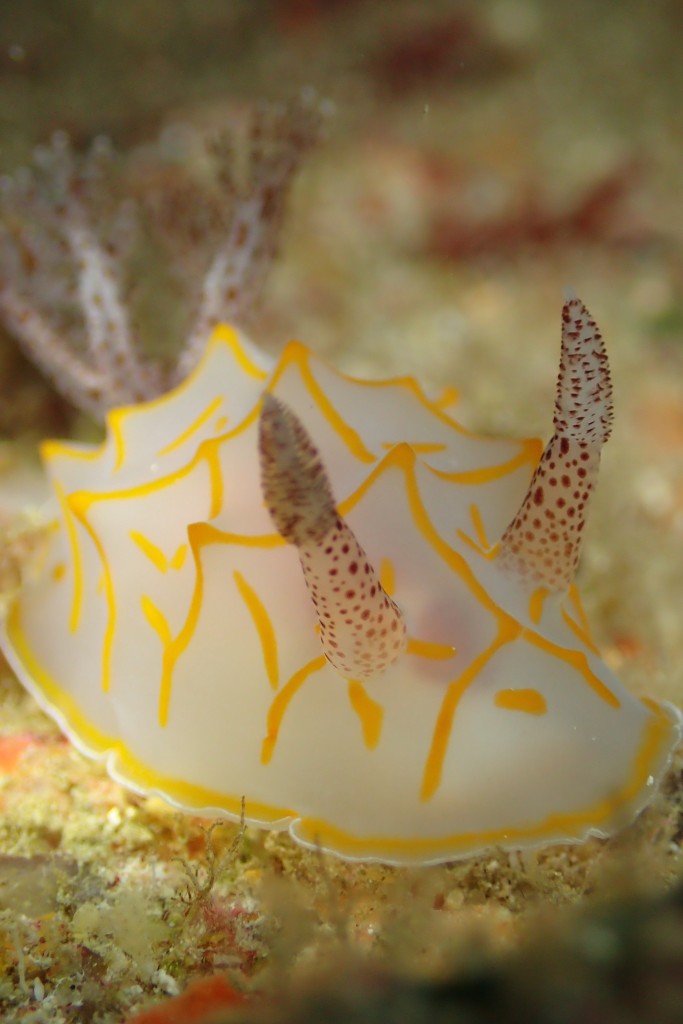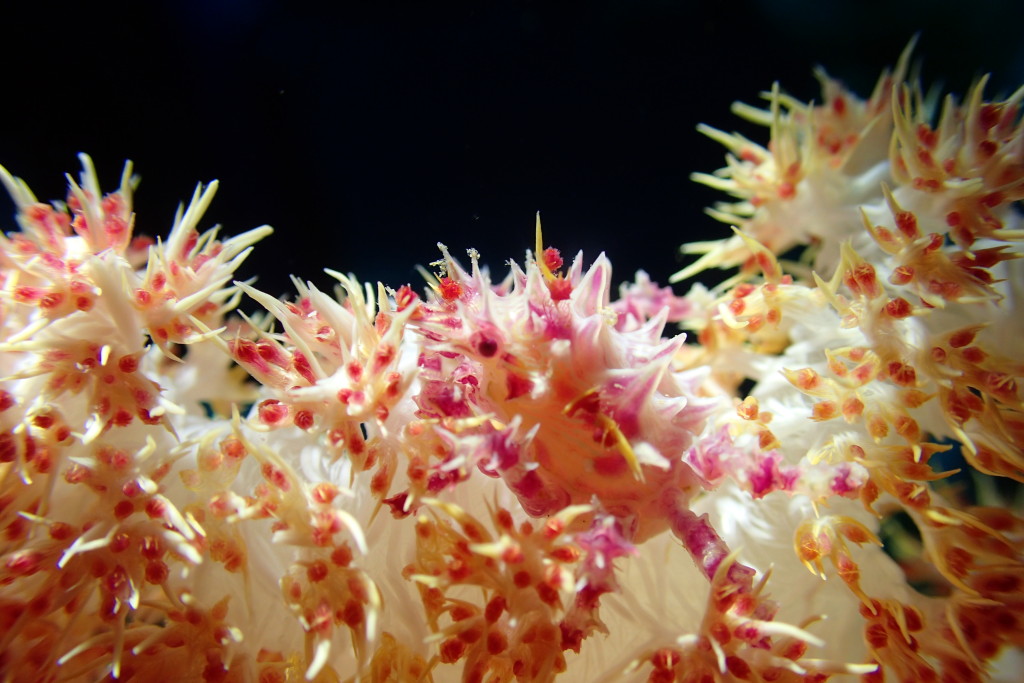Okinawa Prefecture’s Miyakojima Island transports divers to a world of colossal rock formations, tunnels and swim-throughs. Depending on where you go, fish may not seem plentiful, but rarely do you notice their absence. A series of rocky outcrops interspersed with sandy areas means there is lots of underwater life. It’s stunning when the sun streams through the tunnels, or when a flashlight shines over a plethora of nudibranchs and crabs.
Miyakojima Island is well known for its plentiful limestone caves and arches. Most of them are winding horizontal to stepwise tunnels, which open onto more sandy areas and smaller coral reefs. The location of their entrances varies. Some are as deep as 130 feet to 230 feet (40 to 70 m), and some inner parts can be almost or totally dark. A lot of the dive sites offering this kind of environment lie along the north and west coasts of Irabu Island, one of the many islets surrounding Miyakojima Island.
Mao no Kyuden: Dropping onto a shelf at about 16 feet (5 m), a gentle slope leads down to a wall starting at around 33 feet (10 m). Swimming to around 66 feet (20 m), we inspect nooks and crannies, seeking out the life within. Shoaling bigscale soldier fish are everywhere and schools of sweepers are in evidence too. We’ve heard about a resident candy crab at 69 feet (21 m) and set about trying to find him. Eventually he emerges, well camouflaged against a piece of soft coral and wary of the flashlights around him.
This site is an excellent example of the unique underwater topography at Miyakojima Island. Its labyrinth of tunnels give off an air of mystery and anticipation. Next to the candy crab’s home is an entrance where there’s nothing but darkness. But as our eyes adapt and we use our flashlights, we make out the marvelous shapes within. A long, straight tunnel leads back to the surface. The bright sunlight streaming down through the water creates an incredible final scene as the dive comes to an end.
Mini Grotto: Mini Grotto is probably one of Miyakojima’s most popular dive sites, and with good reason. The topography here is simply stunning, and includes tunnels, swim-throughs, massive boulders and sheer walls. Turtles call the area home, as do the ubiquitous lionfish. A proliferation of nudibranchs graze on the rocks, mainly in the shallows. But this site really comes alive with the entrance to a tunnel with a sandy, silty bottom. It’s pitch black upon entry, but pretty soon the light from the other end becomes visible as an eerie, blue glow in the distance gets brighter and brighter.
Coming up to the surface, we’re floating in a pool of crystal-clear water, surrounded by towering, colossal rocky structures. The return route from here is via the same tunnel, where we take time to re-explore, its impressive limestone formations and sea life. The cracks and crevices that web the walls are worth paying attention to for numerous nudibranchs, while the shallower areas are home to stout chromis and red snapper.
Nakanoshima Channel: The dramatic-looking seascape here mainly consists of huge boulders and rocks strewn over a sandy seabed. A boulder field drops away to some nice sandy patches between 45 and 66 feet (14 to 20 m). Anemones coat the rocks and a few juvenile parrotfish swim close by. Squeezing into a narrow swim-through, we emerge onto a sandy slope. We come across a tiny jawfish, peeking up from the beneath the sand. It’s easy to identify these little lovelies by their gaping mouths and huge eyes, staring at us intently before quickly darting out of sight. As the route continues, it’s worth using flashlights to examine the rocky walls for beautiful sponges, corals, fans and some huge urchins. Leaf scorpionfish can also be found tucked into the holes and hollows here.
Wataguchi Garden: After diving through tunnels and exploring the deeper depths, it’s worth taking time to unwind at this site. Rocks and coral heads dot a bottom of pure white sand. The site is also home to staghorn coral, gorgonian fans, table coral and a few hidden treasures, such as squat shrimp. Rays emerge nearby, shaking off their sand camouflage and disappearing into the distance. With a maximum depth of around 40 feet (12 m), this relaxing dive is the perfect way to end a long day. Some of the rocks are quite spread out and there is plenty of activity to keep shutterbugs occupied. Look out for some medium-sized pufferfish and black-spotted pufferfish.




